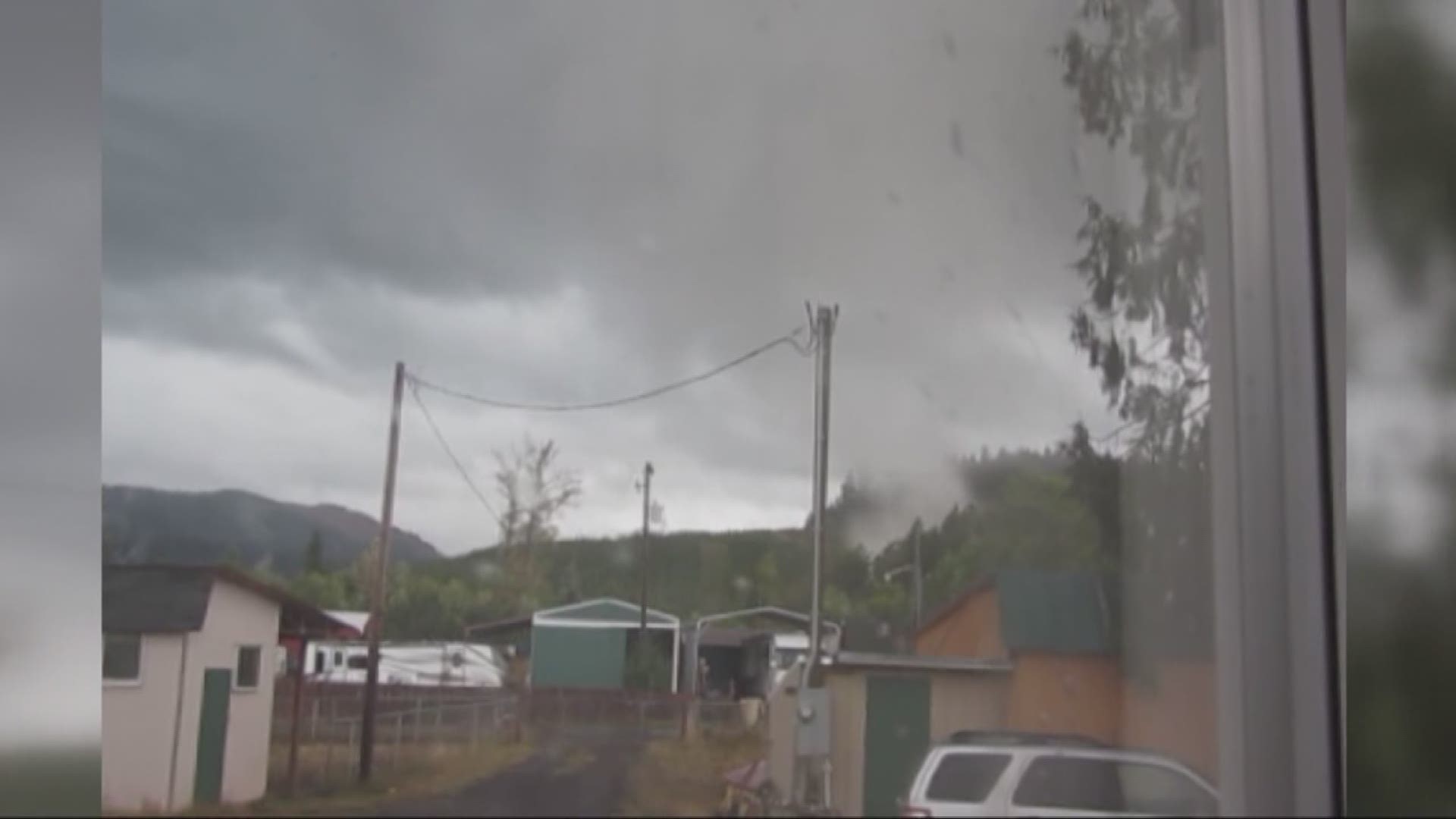PORTLAND, Ore. -- The winds that spun into a destructive force Tuesday near Lebanon picked up anything they could carry.
“I saw in the field, it was swirling and swirling like — I mean there was debris in it – there was everything else. It was coming right for their house,” said witness Pat Hulburt.
She is one of the few who live near Lacomb, where the twister touched down. It destroyed four dairy barns. No one was hurt, but Pat and others were left shaking their heads.
“That never happens in Oregon. I mean Oregon is just, that type of stuff never happens,” she said.
It’s a common feeling here in the Northwest, but it turns out it’s not exactly correct.
Earlier this year, on March 24, a small twister touched down in Orchards, Washington. "Hail was just flying sideways and everything was flying off our patio,” said one witness.
More powerful winds from another twister hammered the coastal town of Manzanita Oct. 14, 2016. The winds destroyed two buildings and damaged several homes and countless trees.
In 2015, Battle Ground, Wash., became ground zero when a tornado touched down on Dec. 10.
Before that, in October of 2014, another twister landed in Longview, Wash., Oct. 23.
In 2013, another tornado hit McMinnville, tearing off roofs and damaging homes.
On Dec. 14, 2010, Aumsville got pounded by a tornado. It destroyed a plumbing store and damaged several roofs.
“I went up against the wall and the other guy went up against the other wall and then the roof came right off…the ceiling…I mean it just blew right off!” said a man who was in a barber shop.
But the biggest tornado to hit Oregon and Washington touched down April 5, 1972. Six people died and another 300 were injured.
It began along NE 33rd and Marine Drive in Portland, according to a report from the National Weather Service.
The tornado moved across the Columbia River and thundered through Vancouver. It stayed on the ground for 10 minutes and cut a path of destruction nine miles long. It was later classified as an EF-3 and is still the deadliest tornado on record in the Northwest.

